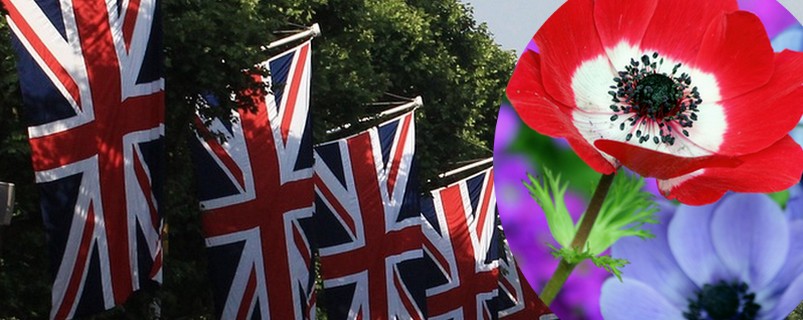Once in a Blue Moon
With the upcoming coronation this month and the common practice of planting up pots, baskets and even flower beds to celebrate significant events, my thoughts turned to gardeners seeking blue flowers in a Red, White & Blue scheme. There is no shortage of red and white blooms in a wide range of plant types but blue is a different kettle of fish.
 The quickest and easiest blue flower for a coronation display has to be the popular summer bedding plant Lobelia with light or dark blue flowers in bushy or trailing form. But there are a few longer lasting blue flowered plants of every type that are garden worthy and widely available. In the shrub category, I would pick out Ceanothus, a large shrub needing a sunny free draining position. They are mainly evergreen and spring flowering but there are a few deciduous or autumn flowers varieties. On a smaller scale, Lithodora is a sprawling evergreen, good for a free draining rockery and there are two species of Ceratostigma with electric blue flowers in late summer. One grows as a neat shrub, the other can spread widely via underground stems, good if you want groundcover.
The quickest and easiest blue flower for a coronation display has to be the popular summer bedding plant Lobelia with light or dark blue flowers in bushy or trailing form. But there are a few longer lasting blue flowered plants of every type that are garden worthy and widely available. In the shrub category, I would pick out Ceanothus, a large shrub needing a sunny free draining position. They are mainly evergreen and spring flowering but there are a few deciduous or autumn flowers varieties. On a smaller scale, Lithodora is a sprawling evergreen, good for a free draining rockery and there are two species of Ceratostigma with electric blue flowers in late summer. One grows as a neat shrub, the other can spread widely via underground stems, good if you want groundcover.
Delphiniums must be the best known blue cottage garden perennials, again light or dark flowers, single or double. The downside is that the emerging foliage is a favourite snack of slugs and snails, one of the reasons why they do not feature in my garden. Camassia grows from a bulb, with typical strappy leaves and a spike of blue star shaped flowers in May. And several Campanula remain on the blue side of mauve, especially Campanula persicifolia, the Canterbury Bell.
Finally there is the almost mythical Himalayan Blue Poppy – not a true poppy, the botanical name is Meconopsis. They need soil rich in organic matter that does not dry out in summer, and a shady spot. Overall. more suited to the cooler, wetter north and west of the UK than the south, even in a ‘normal’ summer. And if you do succeed in getting them to flower, the plants die after setting seed.
But as we have seen there are a few easier options, whether you are seeking the contrast of red, white & blue or a planting scheme that is cool in both senses of the word.
Happy Gardening from Alison
If you enjoyed reading this blog why not receive my monthly newsletter direct to your email inbox with blogs, video tips and seasonal articles to inspire and inform. Sign up HERE.

